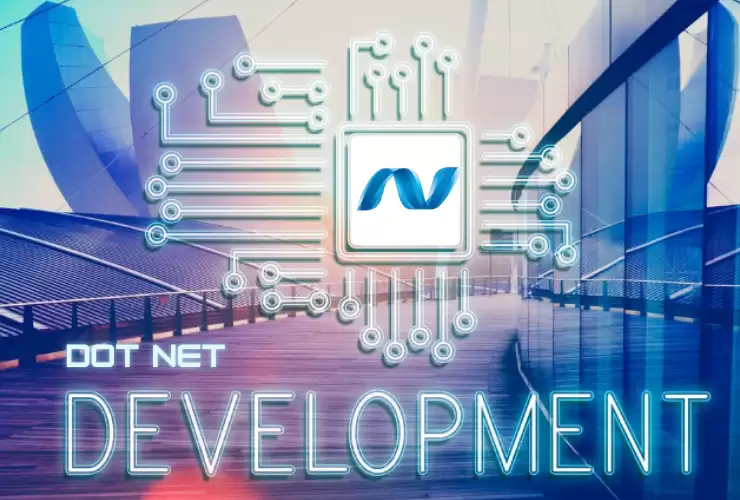The concept of cloud-native applications encompasses the ability to exploit cloud computing environments to provide scalability, resilience, and flexibility. If you’re a business using VB.NET (and even if you’re not), the move to a cloud-native architecture allows you to work with the newest cloud services out there while continuing to capitalize on your firm’s VB.NET expertise.
In this post we will discuss:
• the best practices to build cloud-native applications using VB.NET
• the merits of taking this vie
• how Empirical Edge can assist you with the implementation of efficient, scalable solutions.
Why Build Cloud-Native Applications in VB.NET?
VB.NET is a great platform to develop enterprise applications, it has a robust framework and is end-to-end supported in .NET Core/.NET 7, which allows for cloud-native architectures. Some advantages that come with the use of VB.NET in developing cloud-native applications are as follows:
- Integration with Azure (and all other cloud platforms): To easily access cloud services, storage, and serverless computing.
- Build scalable applications: Make use of all the advantages of microservice architectures, containerized applications, and many of the advantages of cloud-based enterprises (that support dynamic workloads with ease).
- Development speed: With how easy it is to get going with VB.NET and a convenient use of libraries, it can super charge cloud adoption for your business.
- Maintainability: By utilizing a modular architecture for all your applications, it allows for upgrades and enhancements over decades.
- Security & Compliance: Access to new and modern security protocols that allow you to keep sensitive data in the cloud with confidence.
1. Adopt Microservices Architecture
- Decompose applications into smaller, loosely coupled microservices.
- Every microservice can be developed, deployed and scaled independently.
- Use REST APIs or gRPC for service communication.
2. Containerize Applications
- Use Docker to containerize VB.NET applications for portability.
- Containers are perfect for consistency across development, staging, and production.
- They can be orchestrated with Kubernetes for automated scaling.
3. Use Cloud Native Services
- Cloud managed databases, storage, and messaging services offer lowers the operational burden.
- Look to integrate with serverless functions to run event-driven processing.
- Bring in cloud native monitoring and logging tools to drive real-time insights.
4. Employ Continuous Integration and Deployment (CI/CD)
- Use CI/CD tools like Azure DevOps or GitHub Actions to automate the build, test, and deploy pipelines.
- The goal is to achieve fast, reliable, and repeatable deployments.
- Automated testing should be a requirement to ensure code quality.
5. Enhance Performance and Scalability
- Design your application to be asynchronous and make use of parallel processing when possible.
- Implement caching strategies wherever applicable for frequently accessed data points.
- Always monitor application performance and scale resources dynamically.
6. Always Consider Security and Compliance
- Secure data in transit and at rest in transit using one of the encryption protocols.
- Use proper authentication and authorization mechanisms using OAuth2, JWT, or Azure AD.
- Maintain compliance with industry standards such as GDPR, HIPAA, or PCI DSS.
Obstacles in Developing Cloud-Native VB.NET Applications
- Creating microservices for legacy VB.NET applications
- Optimising resources in a cloud environment
- Distributed systems are difficult to manage
- Fault tolerance and high availability
- Monitoring and measuring an application across multiple cloud services
VB.NET Cloud-Native Development Services at Empirical Edge
Empirical Edge delivers scalable, secure, and future-proof cloud-native VB.NET applications for clients.
Our Services include:
- Custom Cloud-Native VB.NET Development: Development for enterprise specific needs.
- Microservices & API Integrations: Communication between services and systems.
- Containerization & Orchestration: Using docker and kubernetes to develop the application in a scale-out environment.
- Performance Optimisation: Using asynchronous processing, caching and auto-scaling.
- Monitoring and Support: Monitoring in real-time, logging and continual support.
Read more about our Services here: VB.NET Development Services
Conclusion
Building cloud-native applications with VB.NET enables businesses to fully leverage cloud capabilities while modernizing legacy applications. By following best practices such as microservices architecture, containerization, CI/CD automation, and performance optimization, organizations can achieve scalable, resilient, and secure cloud solutions.
At Empirical Edge, we combine VB.NET expertise with cloud-native strategies to deliver high-performance applications tailored to your business needs.
Ready to build cloud-native VB.NET applications? Contact Empirical Edge today!









